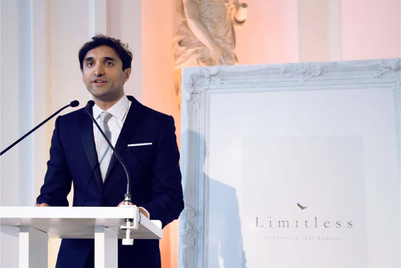
2016 was a watershed year for live video.
Highlights included:
- That Buzzfeed Facebook Live debut with the bursting watermelon back in April, which peaked at 807,000 simultaneous views.
- Proving its mastery for producing content tailored for different platforms, Buzzfeed also partnered with NBC to drive 2.2 billion views of the Rio Olympics on Snapchat made up of ‘live’ stories and its Olympics Discover channel.
- In November, YouTube introduced 4k Live video.
- November also saw Instagram launch Live video within Instagram Stories.
- Twitter made a big play into broadcasting through deals with the likes of the US National Football League and Wimbledon, then integrated live into Twitter using Periscope technology (and probably made Periscope redundant in the process).
What is less well documented is that in 2016, a host of local Asian live apps also blew up across the region. On 22 December 2016:
- Line Live was the top ‘social’ app in the Japan AppStore and sat in the list of top five apps in Japan.
- Bigo Live was in the PlayStore top 20 in Singapore, Thailand, Indonesia, Philippines and Vietnam and is in the 10 to 50 million installs bracket on AppAnnie.
- Afreeca TV was in the top five ‘entertainment’ apps for most of 2016 in Korea.
- Ephemeral Korean Snapchat clone Snow, whilst not quite being a live video broadcast app, does have the sharing of live moments at its core and is now massive across Asia.
The live experience
Having tried a few of these apps that were available in the UK or Singapore AppStore, the overall concept appears the same—loads of young people talking into their phones’ cameras.
Some platforms, like Afreeca and Niconico, are more structured, with videos clearly linked to different themes. ‘Meokbang’ (watching live streams of people eating dinner) has been popular for a couple of years now on Afreeca and is a good example of how local platforms cater for local interests. V Live from Naver is another, focusing on streams of K-pop stars.
Bigo Live is a Singaporean app that has gained real traction throughout Southeast Asia. It has a smoother, simpler video-first UX that feels similar to Snapchat, encouraging the user to get involved and start filming for themselves upon opening the app.
In most of these apps, there is live engagement between the audience and the streamer of the content in the form of not only comments and likes but also gifts that are purchased in-app by viewers, which are given to the content creator as signs of appreciation.
An app that stands out is Line Live; it is definitely more polished, featuring celebrities and scheduled programming shown exclusively on the platform, such as reality shows that resemble Big Brother. Whilst the full experience is in a separate app, it integrates well with the LINE Messenger ecosystem, allowing you to receive notifications on Line when your favourite streams are starting.
Should brands get involved?
There are a couple of ways that brands could get involved with some of these platforms:
- Reach out to influencers to co-create content/endorse your brand: Platforms like Line Live and V Live that feature influencers that are (to some people at least) already known, will come with a degree of brand safety.
- Reach out to the platforms to see if your brands can sponsor ‘gifts’. This is a big point of difference compared to Western apps. Viewers make in-app purchases of gifts and reward streamers if they like the content. Streamers can then cash these rewards in, earning money for their efforts. Having a brand as part of that celebratory reward experience and with the right content could potentially be an opportunity.
- Advertise in Live apps that also feature mobile advertising (such as Niconico) through an ad network that has access to their inventory.
China is probably the most advanced market that offers a perspective on the potential of Live videos. Social and celebrity obsession in China has resulted in the success of interactive shoppable influencer live broadcasts. Maybelline had 5 million views and sold 10,000 lipsticks in two hours through integrating its T-Mall channel with a stream on Meipai. Highlights of celebrity engagement were also shared via Maybelline’s WeChat account.
Opportunity for marketers?
Many industry experts are saying that 2017 will see Live continue to scale. However, apart from certain exceptions (such as food-delivery sponsorships and live fashion), live platforms won’t offer the scale or the right environment for the majority of brands.
Facebook will soon roll out 360 Live videos and Snow, Instagram Stories and Snapchat will surely increase opportunities for advertising in Asia in 2017. Although in most cases, whilst the content may be recorded live, the majority of views will follow over 24 hours and in bite-sized chunks. This fits much better with user behaviour and allows the benefit of authenticity (as people get to see something that actually happened) but where they want to, when they want to.
The real opportunity for marketers in 2017 remains in co-created content with influencers who are active on these platforms that resonate with your audience, and native media placements that are customised to reflect users on platform consumption. The only difference is that in Instagram Stories, Facebook Live mid-rolls, Snapchat and Snow, the content will be short, vertical and viewable!
Jonathan Rudd is head of digital strategy at Carat APAC


.jpg&h=334&w=500&q=100&v=20250320&c=1)

.jpg&h=334&w=500&q=100&v=20250320&c=1)

.jpg&h=334&w=500&q=100&v=20250320&c=1)

.jpeg&h=334&w=500&q=100&v=20250320&c=1)


.jpg&h=334&w=500&q=100&v=20250320&c=1)
.png&h=268&w=401&q=100&v=20250320&c=1)
.jpg&h=268&w=401&q=100&v=20250320&c=1)

.jpg&h=268&w=401&q=100&v=20250320&c=1)



.jpg&h=268&w=401&q=100&v=20250320&c=1)